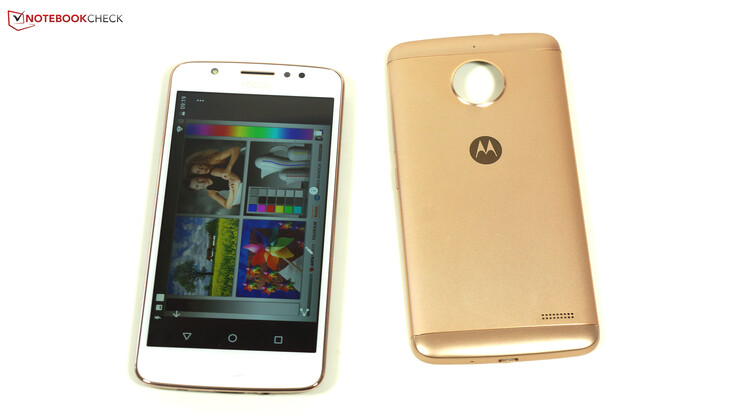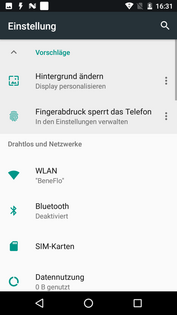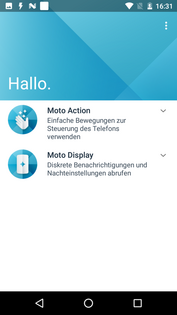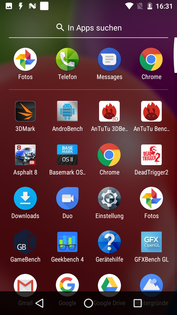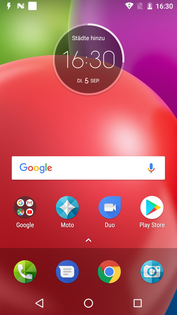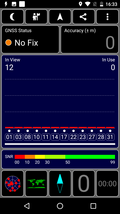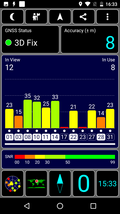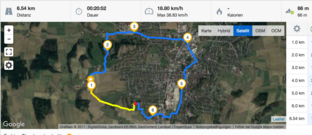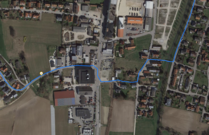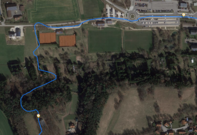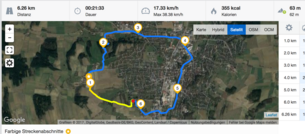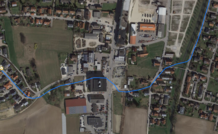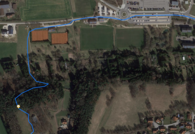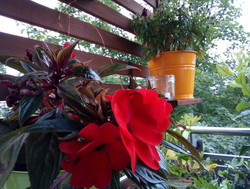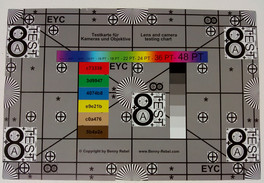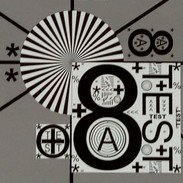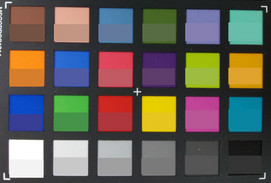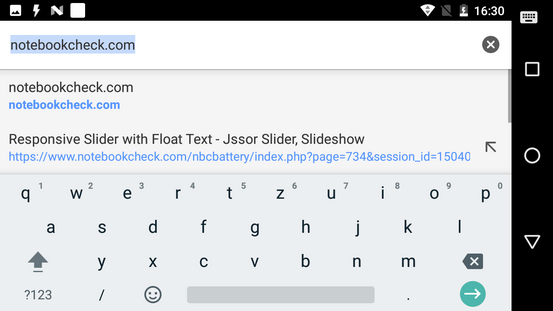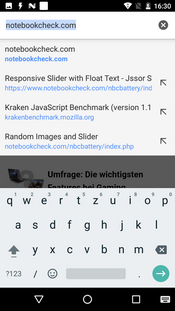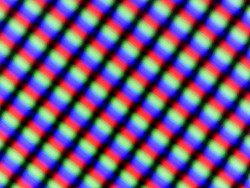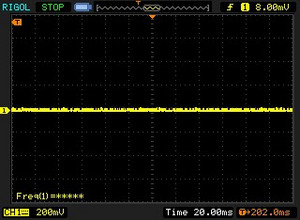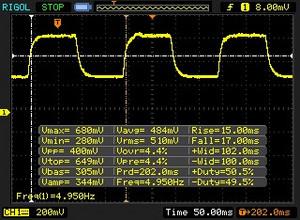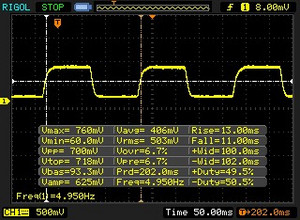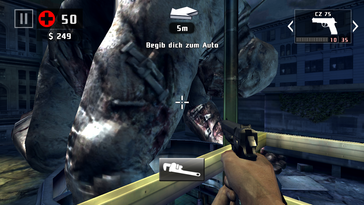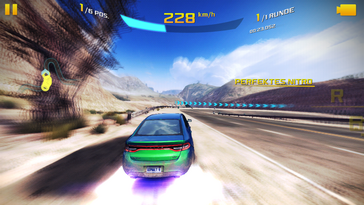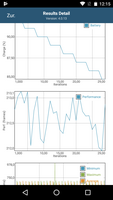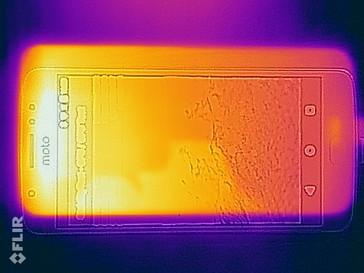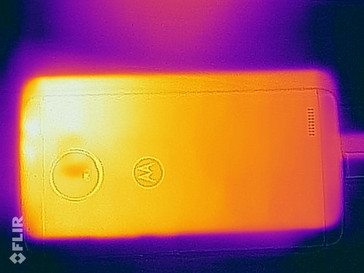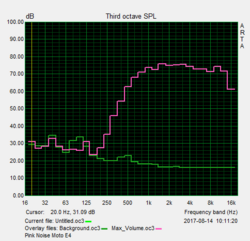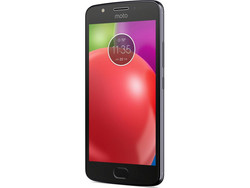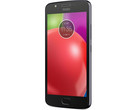Motorola Moto E4 Smartphone Review
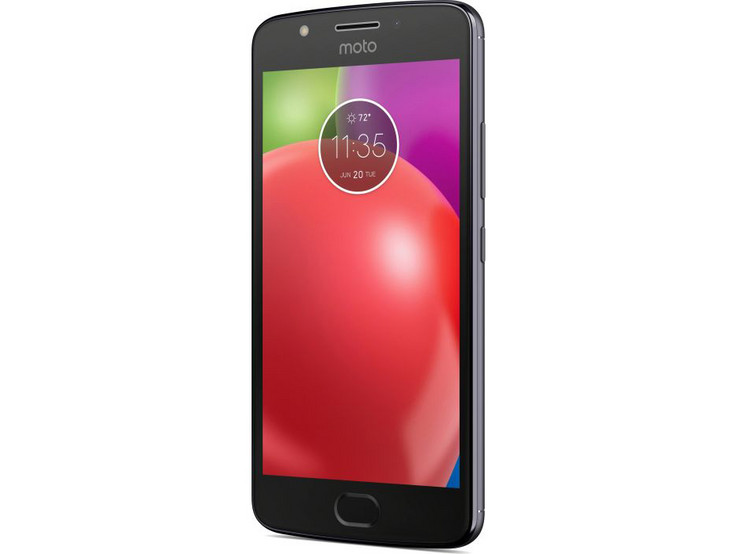
For the original German review, see here.
The Moto E4 is a smartphone available for barely 160 Euros (~$190; available for $130 in the US), that places it in the entry-level segment. You get a compact 5-inch case and even a removable battery, which is a rarity with current smartphones. It came on the market together with the Moto E4 Plus, which offers a much larger battery and better cameras but then costs almost 40 Euros (~$48) more. The predecessor, the Moto E3, was again considerably cheaper, so it will be interesting to see where Lenovo made the improvements.
As comparison devices we use similarly priced 5-inch smartphones, such as the LG K8, the Gigaset GS170, the Samsung Galaxy J3, and the Huawei Y6.
Case
Compared to the predecessor, the design has been adjusted. The long slot in the bottom area, behind which the speaker was, has disappeared and the speaker now radiates towards the back. What has remained is the removable back, which is made from metal. In the Moto E4 it is incredibly difficult to take off and can only be removed using a lot of force. In addition, the thin metal case bends easily and then does not fit perfectly onto the back anymore.
Underneath the back cover is the battery which you have to remove to get at the SIM card or microSD, so a hot swap with the phone running is not possible. This is surprising, since in the Moto E4 Plus you can exchange the cards while the phone is running without any problems. The case is fairly stable, and pressure on the front or back hardly reaches the display. When twisting it, the case does not creak, but there are small traces in the liquid crystal.
What we like about Lenovo's rounded design language is that it makes the smartphone sit in the hand comfortably. At 151 grams, the Moto E4 is not particularly a lightweight, but it is not much heavier than comparable smartphones either.
Features
Compared to the Moto E3, the working memory and storage were each doubled: there is 2 GB of RAM and 16 GB of memory storage in the Moto E4. This is the standard equipment in this price range.
At the bottom edge is a micro-USB port. In this price class, USB-C is still rather unusual. USB-OTG is supported, so you can connect external data storage and even charge other devices with the battery in the Moto E4. MicroSD cards can be inserted into the dedicated slot. Lenovo promises up to 32 GB, but our 64-GB card also works flawlessly. You can format the cards as internal or external storage. With the latter, you can use the cards also in other devices, but then you cannot move apps onto the microSD.
Software
Lenovo uses Android 7.0 as the operating system. Besides the just released Android 8 which can only be found on a few devices, the more current version is 7.1.1, but neither of them are available for the Moto E4. At the time of testing, the security patches were already half a year old, and it is unlikely that there will be updates, since they are rare in this price class.
Android purists will be happy that Lenovo does not install its own UI but uses a pure Android. There are also hardly any additional apps and no preinstalled advertising apps on the smartphone either. You can activate a few additional functions with the Moto app, for example, if you lift up the smartphone, the display can automatically wake up in reduced form and show the time and notifications. Unfortunately, this does not always work perfectly with the Moto E4 but at times is delayed considerably. But in principle it is a great feature.
Communication and GPS
With eight LTE bands the Lenovo Moto E4 looks good. At least in nearby foreign countries you don't need to worry about finding a network. In this price class, LTE Cat. 4 is standard. The reception in the inner-city areas of the German D2 net is okay, and we can get half of the reception bars also indoors.
For WLAN networks, the 802.11 b/g/n standards are supported. The less used and therefore often faster 5-GHz band is not available. Even in this less demanding price class, the WLAN speeds are among the worst and even the predecessor was faster. We load various websites near the router to see how this looks in practice. The web pages render quite slowly and pictures often take 10 seconds to load. At a 10-meter distance from the router and through three walls, 3/4 of the signal still arrives, but loading the pages is even slower than directly next to the router.
| Networking | |
| iperf3 transmit AX12 | |
| Samsung Galaxy J3 2017 | |
| Gigaset GS170 | |
| Lenovo Moto E3 | |
| LG K8 2017 | |
| Huawei Y6 2017 | |
| Lenovo Moto E4 | |
| iperf3 receive AX12 | |
| LG K8 2017 | |
| Gigaset GS170 | |
| Lenovo Moto E3 | |
| Samsung Galaxy J3 2017 | |
| Huawei Y6 2017 | |
| Lenovo Moto E4 | |
While indoors it is unable to locate our position, we are quickly located within an accuracy of eight meters (~26 ft) outdoors. This is rather inexact. Our practical test of the precision locating our position includes a tour on a mountain bike. Besides the Lenovo Moto E4, we also took the professional Garmin Edge 500 navigation device for comparison. On our test unit, the measured distance is 280 meters (~919 ft) shorter, which is quite a big difference on our 6.5 km (~4 miles) test route. In sections, the Moto E4 places us completely off the route, and anyone who wants to navigate with this smartphone should not rely on it too much.
Phone and Call Quality
Lenovo uses Android's standard app for the phone functions of the smartphone. This app is clear and its operation intuitive. Initially you see the entered favorites or often used contacts. You can display the often little-used phone keys with an entry key, and tabs on top offer the list of phone calls and contacts.
The call quality is decent. The ear piece can become fairly loud but then booms quite a bit. The conversation partner is easily understandable and sounds fairly natural. The sound is pleasantly noise free. The microphone records our voice quite well and is also able to deal with fairly loud or low voices. On the speaker phone, the voice of our conversation partner sounds much less full and the highs and mids are strongly emphasized. However, it is still easily understandable. The microphone is good here as well and only has problems to record very low voices from time to time.
Cameras
While the Moto E4 Plus has a 13-MP camera on the back, you have to make do with an 8-MP camera in the Moto E4. This is the same as in the Moto E3, but nowadays not suitable anymore even in this price class. Pictures taken with the main camera appear slightly blurry, and larger color areas appear spotty. In addition, the camera could be brighter. The dynamic in bright areas is fairly good and you can also still make out a few details in dark areas. You can take videos at a maximum 720p resolution with 30 fps. The autofocus attracts attention with some annoying pumping, so it goes through all the stages of sharpness and blurriness, before it finds the right one. The images then appear fairly sharp, but larger areas are poor in detail. The exposure adjusts to the environment quite fast and accurately.
The front camera has a resolution of 5 megapixels, which is the norm in almost all the devices of this price level and even above. The pictures appear with slightly cool colors. You have to keep the right distance to the object through the fixed focus, otherwise the image becomes blurry. The dynamic in dark areas is quite good, but bright areas become quickly too bright.
The main camera also must prove itself in our test lab, where we use controlled light conditions for easier comparison of the camera images. Color areas appear in parts very pixelated with the camera of the Moto E4, and the edges are often blurry. The color display is clearly too pale. Here the Samsung Galaxy J3, for example, does much better in terms of the camera.
Accessories and Warranty
Except for the charger and a USB cable, there are no accessories in the box. The warranty of the device is limited to 24 months. Please see our Guarantees, Return policies and Warranties FAQ for country-specific information.
Input Devices and Operation
Being faithful to the Motorola philosophy, Lenovo uses Google's GBoard standard app as the virtual keyboard. It is intuitive to operate, very clean, and it still has strong functionalities.
There is a fingerprint sensor below the screen, which is always a small sensation in this price class. It operates very fast and can also be used for Android navigation. A short press brings you back to the Home screen and a longer press switches the smartphone into standby mode. By swiping, you go back or go to the last opened app. If you don't want that, you can just use the on-screen keys for navigation.
Although the hardware keys for standby and volume are set tightly into their places on the right case side, their pressure point is slightly spongy.
Display
A display with 1280x720 pixel resolution is standard in this price class, and with the Moto E4, Lenovo sticks to this. The 5-inch screen appears sufficiently sharp, but of course Full HD displays appear even slightly sharper in a direct comparison. Compared to the predecessor, the screen became a little brighter and now achieves a very good 474 cd/m² on average. However at 87%, the brightness distribution is not quite so even anymore and small brightness differences in large color areas are even visible to the naked eye.
| |||||||||||||||||||||||||
Brightness Distribution: 87 %
Center on Battery: 488 cd/m²
Contrast: 1627:1 (Black: 0.3 cd/m²)
ΔE Color 5.4 | 0.5-29.43 Ø5
ΔE Greyscale 5.5 | 0.57-98 Ø5.3
96.2% sRGB (Calman 2D)
Gamma: 2.27
| Lenovo Moto E4 IPS, 1280x720, 5.00 | Huawei Y6 2017 IPS, 1280x720, 5.00 | Samsung Galaxy J3 2017 PLS, 1280x720, 5.00 | Gigaset GS170 IPS, 1280x720, 5.00 | LG K8 2017 IPS, 1280x720, 5.00 | Lenovo Moto E3 IPS, 1280x720, 5.00 | |
|---|---|---|---|---|---|---|
| Screen | 22% | 8% | -51% | -35% | -16% | |
| Brightness middle | 488 | 438 -10% | 502 3% | 418 -14% | 358 -27% | 436 -11% |
| Brightness | 474 | 432 -9% | 494 4% | 418 -12% | 351 -26% | 420 -11% |
| Brightness Distribution | 87 | 90 3% | 89 2% | 92 6% | 93 7% | 91 5% |
| Black Level * | 0.3 | 0.13 57% | 0.35 -17% | 0.45 -50% | 0.49 -63% | 0.41 -37% |
| Contrast | 1627 | 3369 107% | 1434 -12% | 929 -43% | 731 -55% | 1063 -35% |
| Colorchecker dE 2000 * | 5.4 | 4.8 11% | 4.6 15% | 9.7 -80% | 7.1 -31% | 5.4 -0% |
| Colorchecker dE 2000 max. * | 9 | 11.4 -27% | 8 11% | 18.9 -110% | 14.9 -66% | 10 -11% |
| Greyscale dE 2000 * | 5.5 | 3.2 42% | 2.5 55% | 11.3 -105% | 6.5 -18% | 7 -27% |
| Gamma | 2.27 97% | 2.23 99% | 2.29 96% | 2.27 97% | 2.12 104% | 2.13 103% |
| CCT | 7397 88% | 7090 92% | 6351 102% | 10414 62% | 8166 80% | 8318 78% |
* ... smaller is better
Screen Flickering / PWM (Pulse-Width Modulation)
| Screen flickering / PWM not detected | |||
In comparison: 53 % of all tested devices do not use PWM to dim the display. If PWM was detected, an average of 17900 (minimum: 5 - maximum: 3846000) Hz was measured. | |||
A good black value of 0.3 cd/m² together with the good maximum brightness leads to the contrast ratio of 1627:1. This is a very good value, but our test unit still cannot stand up against the Huawei Y6 which has an extremely high contrast. You can activate the "Intensive" color mode in the settings to make the colors appear slightly more vibrant, otherwise they appear quite natural. It is just a matter of taste whichever you prefer. The test unit cannot reach the great colors of an AMOLED display, though.
This also shows in a more detailed examination of the screen with the spectral photometer and the CalMAN software. In addition to a slight blue tint, the accuracy of the color display is only mediocre. At least more than 96% of the sRGB color space is covered according to CalMAN. However, this measurement shows more of a trend.
Display Response Times
| ↔ Response Time Black to White | ||
|---|---|---|
| 32 ms ... rise ↗ and fall ↘ combined | ↗ 15 ms rise | |
| ↘ 17 ms fall | ||
| The screen shows slow response rates in our tests and will be unsatisfactory for gamers. In comparison, all tested devices range from 0.1 (minimum) to 240 (maximum) ms. » 84 % of all devices are better. This means that the measured response time is worse than the average of all tested devices (21.5 ms). | ||
| ↔ Response Time 50% Grey to 80% Grey | ||
| 24 ms ... rise ↗ and fall ↘ combined | ↗ 13 ms rise | |
| ↘ 11 ms fall | ||
| The screen shows good response rates in our tests, but may be too slow for competitive gamers. In comparison, all tested devices range from 0.2 (minimum) to 636 (maximum) ms. » 29 % of all devices are better. This means that the measured response time is better than the average of all tested devices (33.7 ms). | ||
Thanks to its bright display, you can also use the Moto E4 outdoors, but of course the reflective surface will be a hindrance in bright surroundings. The brightness sensor adjusts the display brightness fittingly and quickly.
The viewing angles of the display are good, thanks to IPS, and you can recognize the image on the screen from any perspective. However, you do need to count on color and brightness shifts.
Performance
The Lenovo Moto E4 is equipped with a Mediatek MT6737, which has four cores and a maximum 1250 MHz clock speed. This makes the device noticeably faster than its predecessor, so that a 20 to 30% higher performance is possible in the benchmarks. Compared to similarly priced devices, the Moto E4 is in the middle of the field. The Huawei Y6 is considerably faster, while the LG K8 and the Gigaset GS170, which uses the same SoC, are about at the same level.
An ARM Mali-T720 MP2 with two cores and a 650 MHz clock speed handles the graphics calculations. With this, the Moto E4 achieves a performance in the middle of the field of the comparison devices. At least all the benchmarks will run, while the Moto E3 and LG K8 in parts don't get any results at all here. This is a good indication that the Moto E4 should be more stable and be able to handle more apps than those devices.
| AnTuTu v6 - Total Score (sort by value) | |
| Lenovo Moto E4 | |
| Huawei Y6 2017 | |
| Samsung Galaxy J3 2017 | |
| Gigaset GS170 | |
| LG K8 2017 | |
| Lenovo Moto E3 | |
| PCMark for Android | |
| Work performance score (sort by value) | |
| Lenovo Moto E4 | |
| Huawei Y6 2017 | |
| Gigaset GS170 | |
| LG K8 2017 | |
| Work 2.0 performance score (sort by value) | |
| Lenovo Moto E4 | |
| Huawei Y6 2017 | |
| Samsung Galaxy J3 2017 | |
| Gigaset GS170 | |
| LG K8 2017 | |
| Lenovo Moto E3 | |
| Geekbench 4.4 | |
| 64 Bit Single-Core Score (sort by value) | |
| Lenovo Moto E4 | |
| Huawei Y6 2017 | |
| Samsung Galaxy J3 2017 | |
| Gigaset GS170 | |
| LG K8 2017 | |
| 64 Bit Multi-Core Score (sort by value) | |
| Lenovo Moto E4 | |
| Huawei Y6 2017 | |
| Samsung Galaxy J3 2017 | |
| Gigaset GS170 | |
| LG K8 2017 | |
| Compute RenderScript Score (sort by value) | |
| Lenovo Moto E4 | |
| Huawei Y6 2017 | |
| Samsung Galaxy J3 2017 | |
| LG K8 2017 | |
| GFXBench (DX / GLBenchmark) 2.7 | |
| T-Rex Onscreen (sort by value) | |
| Lenovo Moto E4 | |
| Huawei Y6 2017 | |
| Samsung Galaxy J3 2017 | |
| Gigaset GS170 | |
| LG K8 2017 | |
| Lenovo Moto E3 | |
| 1920x1080 T-Rex Offscreen (sort by value) | |
| Lenovo Moto E4 | |
| Huawei Y6 2017 | |
| Samsung Galaxy J3 2017 | |
| Gigaset GS170 | |
| LG K8 2017 | |
| Lenovo Moto E3 | |
| GFXBench 3.0 | |
| on screen Manhattan Onscreen OGL (sort by value) | |
| Lenovo Moto E4 | |
| Huawei Y6 2017 | |
| Samsung Galaxy J3 2017 | |
| Gigaset GS170 | |
| LG K8 2017 | |
| Lenovo Moto E3 | |
| 1920x1080 1080p Manhattan Offscreen (sort by value) | |
| Lenovo Moto E4 | |
| Huawei Y6 2017 | |
| Samsung Galaxy J3 2017 | |
| Gigaset GS170 | |
| LG K8 2017 | |
| Lenovo Moto E3 | |
| GFXBench 3.1 | |
| on screen Manhattan ES 3.1 Onscreen (sort by value) | |
| Lenovo Moto E4 | |
| Huawei Y6 2017 | |
| Samsung Galaxy J3 2017 | |
| Gigaset GS170 | |
| LG K8 2017 | |
| Lenovo Moto E3 | |
| 1920x1080 Manhattan ES 3.1 Offscreen (sort by value) | |
| Lenovo Moto E4 | |
| Huawei Y6 2017 | |
| Samsung Galaxy J3 2017 | |
| Gigaset GS170 | |
| LG K8 2017 | |
| Lenovo Moto E3 | |
In the browser performance, the Moto E4 places more in the rear of the comparison field. Even though more demanding HTML5 games such as the pinball game at letsplay.ouigo.com stutter at times, they are still smoothly playable.
| JetStream 1.1 - Total Score | |
| Huawei Y6 2017 (Chrome 60) | |
| Samsung Galaxy J3 2017 (Chrome 59) | |
| LG K8 2017 (Chrome 57) | |
| Lenovo Moto E4 (Chrome 60) | |
| Gigaset GS170 (Chrome Version 59) | |
| Lenovo Moto E3 (Chrome 56) | |
| Octane V2 - Total Score | |
| Huawei Y6 2017 (Chrome 60) | |
| LG K8 2017 (Chrome 57) | |
| Samsung Galaxy J3 2017 (Chrome 59) | |
| Gigaset GS170 (Chrome Version 59) | |
| Lenovo Moto E4 (Chrome 60) | |
| Lenovo Moto E3 (Chrome 56) | |
| Mozilla Kraken 1.1 - Total | |
| Lenovo Moto E4 (Chrome 60) | |
| Lenovo Moto E3 (Chrome 56) | |
| Gigaset GS170 (Chrome Version 59) | |
| Samsung Galaxy J3 2017 (Chrome 59) | |
| Huawei Y6 2017 (Chrome 60) | |
| LG K8 2017 (Chrome 57) | |
| WebXPRT 2015 - Overall | |
| Huawei Y6 2017 (Chrome 60) | |
| Samsung Galaxy J3 2017 (Chrome 59) | |
| Lenovo Moto E4 (Chrome 60) | |
| Lenovo Moto E3 (Chrome 56) | |
* ... smaller is better
In terms of accessing the storage, our test unit does not fare that badly, but it remains only on the level of the price class. The access to our reference microSD card, a Toshiba Exceria Pro M501, is quite fast, but it cannot make use of the potential fast access rates of the card by any means. In the internal storage random writes, meaning the writing onto randomly distributed blocks, the memory is quite fast, while all the remaining access speeds are rather mediocre. In general, the load times of the device are average.
| Lenovo Moto E4 | Huawei Y6 2017 | Samsung Galaxy J3 2017 | Gigaset GS170 | LG K8 2017 | Lenovo Moto E3 | |
|---|---|---|---|---|---|---|
| AndroBench 3-5 | -0% | 2% | -26% | 39% | -41% | |
| Sequential Read 256KB | 187.6 | 202.6 8% | 177.7 -5% | 197.9 5% | 270.8 44% | 141.4 -25% |
| Sequential Write 256KB | 45.3 | 66.9 48% | 51 13% | 44.79 -1% | 84.6 87% | 37.3 -18% |
| Random Read 4KB | 18.7 | 25.93 39% | 24 28% | 18.34 -2% | 41.6 122% | 16 -14% |
| Random Write 4KB | 29.2 | 20.54 -30% | 9.5 -67% | 10.45 -64% | 12.5 -57% | 8 -73% |
| Sequential Read 256KB SDCard | 65.4 | 48.4 -26% | 70.3 7% | 37.41 ? -43% | 78.6 ? 20% | 29.78 ? -54% |
| Sequential Write 256KB SDCard | 44.9 | 26.4 -41% | 59.6 33% | 21.34 ? -52% | 52.2 ? 16% | 17.49 ? -61% |
Games
The demanding Asphalt 8 racing game does not run smoothly in full detail. Only 13 fps is reached on average, and with minimum detail it reaches 29 fps which is slightly less than the completely smooth 30 frames. Dead Trigger 2, a zombie shooter, is less demanding and it runs smoothly also on the Moto E4. The same goes for simpler games such as Angry Birds.
Operation creates no problems, and the touchscreen and position sensor function reliably and without delay.
| Asphalt 8: Airborne | |||
| Settings | Value | ||
| high | 13 fps | ||
| very low | 29 fps | ||
| Dead Trigger 2 | |||
| Settings | Value | ||
| high | 30 fps | ||
Emissions
Temperature
Under maximum load our test unit reaches a temperature of 35 °C (95 °F) at most, which we measured at the front in the camera area. This is a warming which can hardly be felt. Compared to the idle mode, the device warms up only by 3 °C (~5 °F) at this place.
We do not expect a limitation to the performance via throttling. In the GFXBench Manhattan 3.1 battery test which renders a sequence 30 times and then compares the achieved frames, there are only minimal differences between the beginning and end of the test run. Thus the performance can also be maintained after a longer load.
(+) The maximum temperature on the upper side is 35 °C / 95 F, compared to the average of 35 °C / 95 F, ranging from 21.9 to 56 °C for the class Smartphone.
(+) The bottom heats up to a maximum of 34.5 °C / 94 F, compared to the average of 33.8 °C / 93 F
(+) In idle usage, the average temperature for the upper side is 29.2 °C / 85 F, compared to the device average of 32.7 °C / 91 F.
Speaker
The small mono speaker is positioned at the back. This is not a particularly good position, since it can easily be muffled by the hand or on soft surfaces. The maximum volume of the speaker is 85.6 dB(A), which can fill a small room. However, the speaker emphasizes the highs and the low mids and bass is lacking, so listening to music is not really enjoyable. At least the highs are not booming uncomfortably but are still recognizable with higher volumes. The speaker is good enough to listen to music or videos, but anyone wanting a better sound needs to use headphones or external speakers, which can easily be connected to the 3.5-mm audio port or via Bluetooth to receive a clean sound.
Lenovo Moto E4 audio analysis
(+) | speakers can play relatively loud (85.6 dB)
Bass 100 - 315 Hz
(-) | nearly no bass - on average 39.8% lower than median
(±) | linearity of bass is average (11% delta to prev. frequency)
Mids 400 - 2000 Hz
(±) | reduced mids - on average 5.1% lower than median
(±) | linearity of mids is average (7.6% delta to prev. frequency)
Highs 2 - 16 kHz
(+) | balanced highs - only 2.4% away from median
(+) | highs are linear (2.1% delta to prev. frequency)
Overall 100 - 16.000 Hz
(±) | linearity of overall sound is average (24.6% difference to median)
Compared to same class
» 53% of all tested devices in this class were better, 7% similar, 39% worse
» The best had a delta of 12%, average was 38%, worst was 134%
Compared to all devices tested
» 71% of all tested devices were better, 6% similar, 23% worse
» The best had a delta of 4%, average was 25%, worst was 134%
Huawei Y6 2017 audio analysis
(+) | speakers can play relatively loud (83.4 dB)
Bass 100 - 315 Hz
(-) | nearly no bass - on average 29.6% lower than median
(±) | linearity of bass is average (12.3% delta to prev. frequency)
Mids 400 - 2000 Hz
(±) | reduced mids - on average 5.8% lower than median
(+) | mids are linear (6.8% delta to prev. frequency)
Highs 2 - 16 kHz
(±) | higher highs - on average 7.2% higher than median
(+) | highs are linear (4.4% delta to prev. frequency)
Overall 100 - 16.000 Hz
(±) | linearity of overall sound is average (26.6% difference to median)
Compared to same class
» 63% of all tested devices in this class were better, 6% similar, 31% worse
» The best had a delta of 12%, average was 38%, worst was 134%
Compared to all devices tested
» 79% of all tested devices were better, 4% similar, 17% worse
» The best had a delta of 4%, average was 25%, worst was 134%
Frequency comparison (checkboxes selectable!)
Battery Life
Power Consumption
The Moto E4 likes to use a little more power, in particular in idle mode. When the device is turned on but there is no load, at 2.38 watts on average, the smartphone uses quite a lot of power. The predecessor was overall more efficient and the comparison devices also make do with much less power. However, under load the energy consumption is comparatively low.
| Off / Standby | |
| Idle | |
| Load |
|
| Lenovo Moto E4 2800 mAh | Samsung Galaxy J3 2017 2400 mAh | Gigaset GS170 2500 mAh | LG K8 2017 2500 mAh | Lenovo Moto E3 2800 mAh | |
|---|---|---|---|---|---|
| Power Consumption | 3% | 14% | 13% | 17% | |
| Idle Minimum * | 0.87 | 0.82 6% | 0.54 38% | 0.65 25% | 0.79 9% |
| Idle Average * | 2.38 | 1.94 18% | 1.56 34% | 1.6 33% | 1.7 29% |
| Idle Maximum * | 2.47 | 2.06 17% | 1.6 35% | 1.62 34% | 1.72 30% |
| Load Average * | 2.63 | 3.31 -26% | 3.18 -21% | 2.97 -13% | 2.65 -1% |
| Load Maximum * | 3.86 | 3.89 -1% | 4.42 -15% | 4.34 -12% | 3.16 18% |
* ... smaller is better
Battery Life
With 2800 mAh or 10.6 Wh, the battery has quite a high capacity. Yet, a runtime of only 8:42 hours in the WLAN test is disappointing. The Galaxy J3 by Samsung gets three hours more out of a smaller battery. The predecessor lasted much longer as well. The idle battery life of not even 22 hours is much less compelling. We expected more from the relatively large battery capacity of the Moto E4, and the standard battery life for a device of this price class remains unchanged. However, it is still plenty for a workday at the office and even for the night afterwards. During average use, the device has to be plugged in the next day, though. Charging takes just below two hours.
The removable battery is definitely a large advantage. Anyone who needs a longer battery life can just take a second charged battery and use that when necessary.
| Lenovo Moto E4 2800 mAh | Huawei Y6 2017 3000 mAh | Samsung Galaxy J3 2017 2400 mAh | Gigaset GS170 2500 mAh | LG K8 2017 2500 mAh | Lenovo Moto E3 2800 mAh | |
|---|---|---|---|---|---|---|
| Battery Runtime | 13% | 20% | -15% | 2% | 7% | |
| Reader / Idle | 1302 | 1522 17% | 1425 9% | 1325 2% | ||
| H.264 | 608 | 693 14% | 819 35% | 649 7% | ||
| WiFi v1.3 | 522 | 654 25% | 722 38% | 442 -15% | 594 14% | 621 19% |
| Load | 316 | 302 -4% | 305 -3% | 280 -11% | 315 0% |
Pros
Cons
Verdict
The Moto E4 is an affordable smartphone that offers some highlights, such as a fingerprint sensor, pure Android, and removable battery. If you don't consider the camera the most important feature in a smartphone or depend on exact navigation, then you get the performance typical for this price class in all the other areas: the voice quality is decent, the performance appropriate, and the battery life suitable in practice.
Compared to the predecessor, the higher price is justified by the metal case, the higher performance, and the additional storage. The reason why entry-level phones in particular cost a few Euros more this year lies to a large extent in the storage chips which are currently very expensive. The Moto E3, for example, offered a longer battery life, which makes taking a look at it also worthwhile. As a note to anyone who is currently looking at the Moto E4 Plus: it is much larger and heavier, and the battery is not removable, but it also has a much larger capacity. Compared to the Moto E4, the performance is about the same. For anyone who would like to find out more, we have a detailed review of the Moto E4 Plus.
The Moto E4 is a solid entry-level smartphone that has only few essential weaknesses and convinces with a removable battery and fingerprint sensor. However, the camera should not be very important to the user, since the image quality is rather meager.
When buying a smartphone, you should always weigh which features are really important to you. If a removable battery and a fingerprint sensor belong to these features, the Moto E4 is surely a device you should consider. But anyone who hopes for a long life of the built-in battery should rather consider the Samsung Galaxy J3, which at this point falls in the same price range as the Moto E4. The Huawei Y6 offers most performance for the buck.
Lenovo Moto E4
-
09/08/2017 v6(old)
Florian Wimmer


 Deutsch
Deutsch English
English Español
Español Français
Français Italiano
Italiano Nederlands
Nederlands Polski
Polski Português
Português Русский
Русский Türkçe
Türkçe Svenska
Svenska Chinese
Chinese Magyar
Magyar